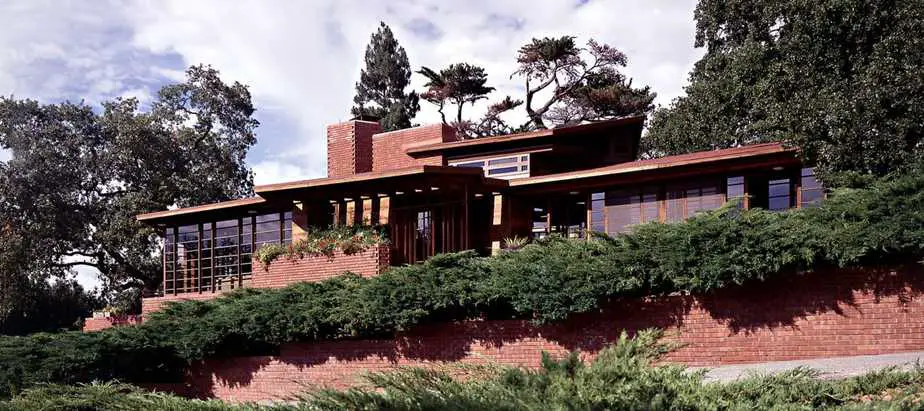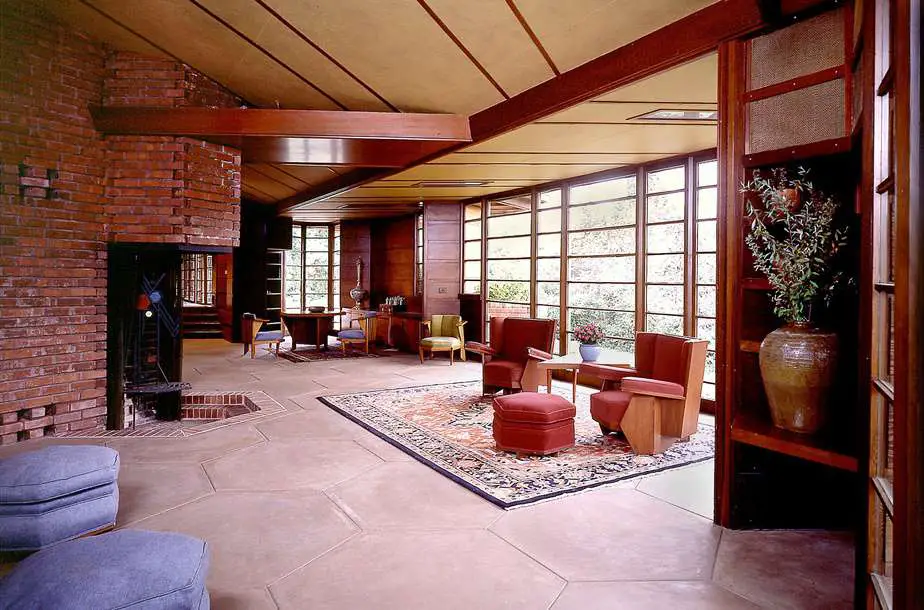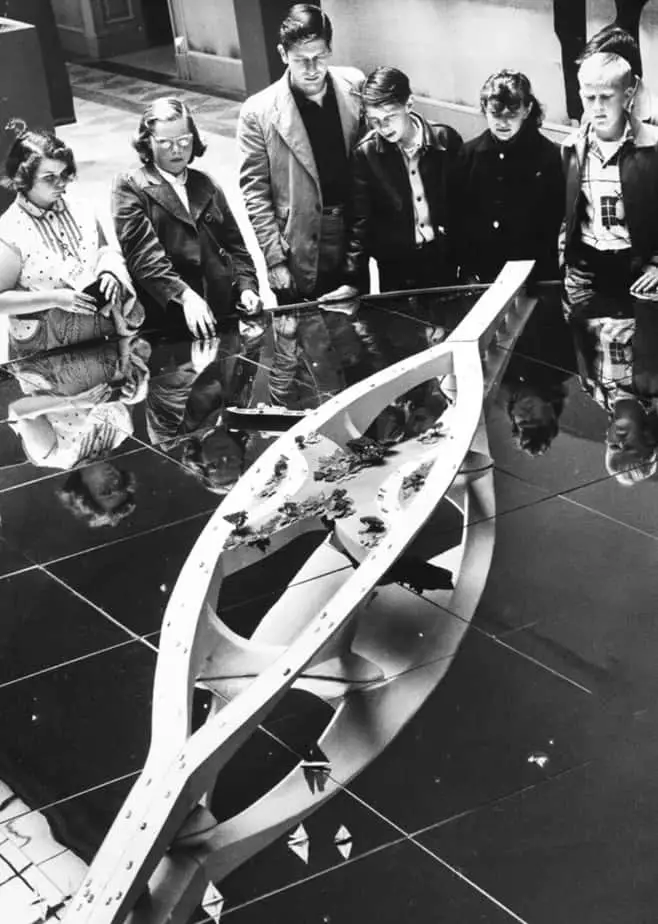Marin Civic Center, 1957
The Marin Civic Center is one of Wright’s most ambitious public structures. It’s quite large, in fact, this structure with arches reminiscent of aqueducts is visible from the highway. As you walk through the hallways and courtyards of this building, you may notice that it is filled with symbolism and Wright’s statements about the government. // The Civic Center is open weekdays. They give guided tours. Get more details, photos, and history about the Civic Center.
V. C. Morris Gift Shop (Now, XANADU Gallery)
Located just off Union Square, the V. C. Morris gift shop‘s distinctive arched brickwork was designed to lure passers-by into the shop’s airy interior. The interior design has similarities to the Guggenheim Museum, another of Wright’s creations. // 140 Maiden Ln, Union Square; pictured above.
Hanna House
The Hanna House, also known as the Hanna-Honeycomb House was designed for Stanford University professor Paul Hanna, his wife Jean and their five children. It was Wright’s first design based on non-rectangular forms. In fact, not a single 90-degree angle exists in this house. The Hanna House is a part of this guide because it was as a turning point for Wright and marks the start of his success. // 737 Frenchmans Rd, Stanford; hannahousetours.stanford.edu.
Eddie’s House
Wright wasn’t above lying down with dogs. In fact, the late designer once drafted a doghouse—reportedly his only doghouse—for a 12-year-old kid. Wright designed Eddie’s House to be in keeping with the family’s home, known as the Robert Berger House, which he had previously designed. The plans for the doghouse were completed by Wright in 1957, and the four square foot triangular house was built in 1963. In 1973 Eddie’s House was removed and thrown away, but in 2010 Jim and Eric Berger, sons of Robert Berger, rebuilt Eddie’s House from the original plans for a segment in Romanza, a documentary film by Michael Miner about Frank Lloyd Wright’s architectural works in California. The doghouse remains the smallest structure Frank Lloyd Wright ever designed. // lettersofnote.com.
The Butterfly Bridge
After the construction of the Bay Bridge in 1933, San Francisco began considering duplicating the bridge and running a second one further south across the bay. Enter Wright, whose idea and design for a second Bay Bridge never came to fruition. The noted architect hated the idea of a second steel structure similar to the San Francisco–Oakland Bay Bridge. Partnering with engineer Jaroslav J. Polivka, Wright proposed a concrete “Butterfly Bridge,” spanning from Army Street (now Cesar Chavez) and Third Street to its eastern terminus on Bay Farm Island, just north of the Oakland Airport. C’est La Vie. // 99percentinvisible.org.
Clinton Walker House, Carmel
As if the brickwork and broad roof weren’t impressive enough, this hexagon-based beachfront house also has stunning views of the Pacific Ocean. It’s become so immortalized beachside that tours are now given within the house and can be rented for photo-ops. // 26336 Scenic Rd, Carmel-By-The-Sea; any tours need to be made in phone call first.






